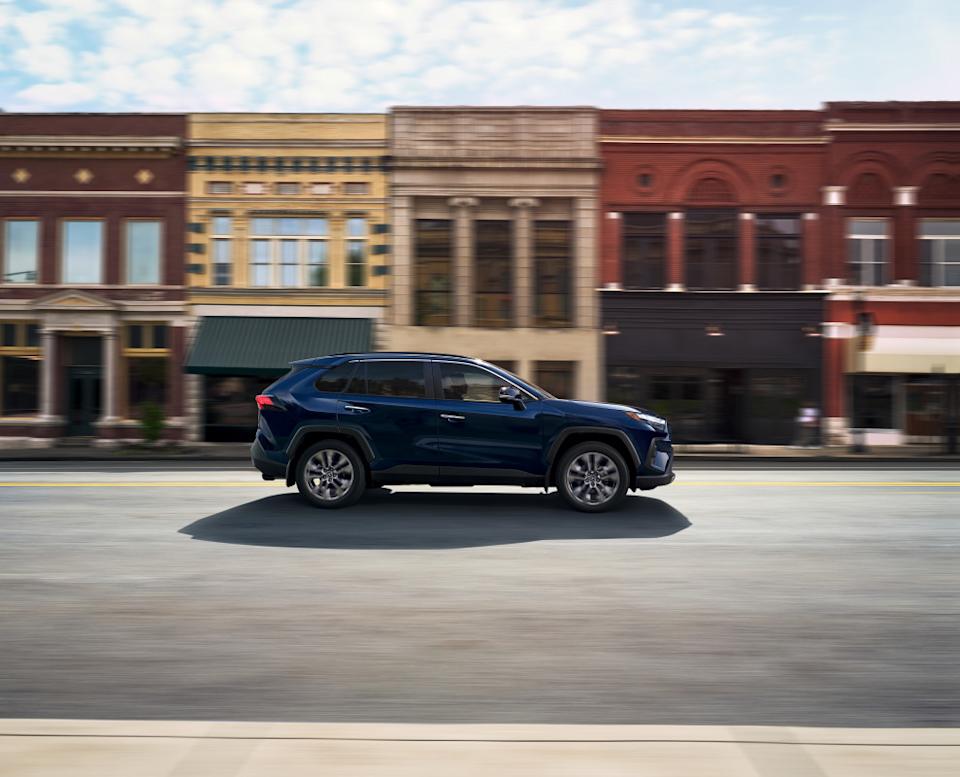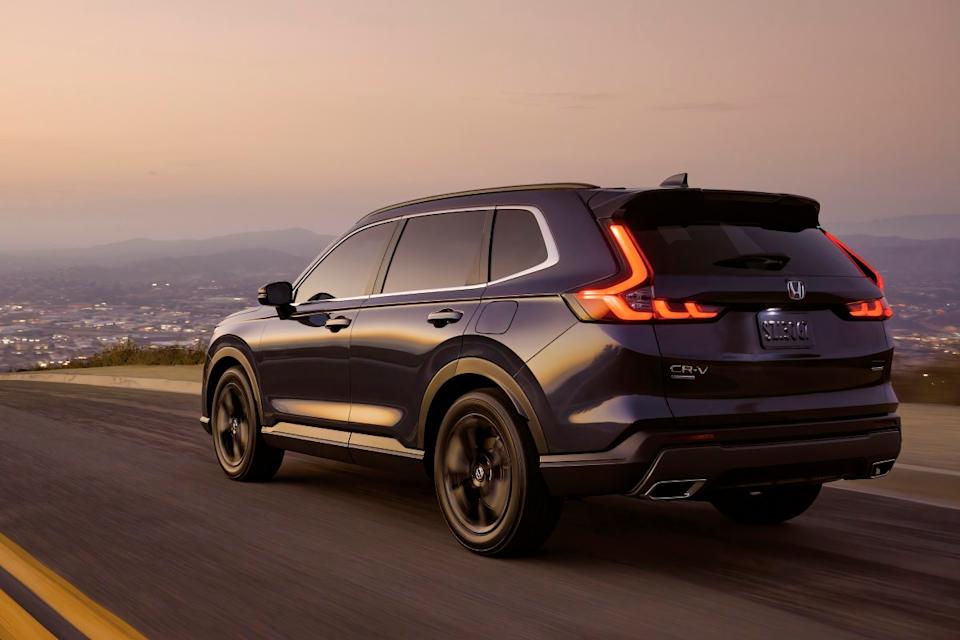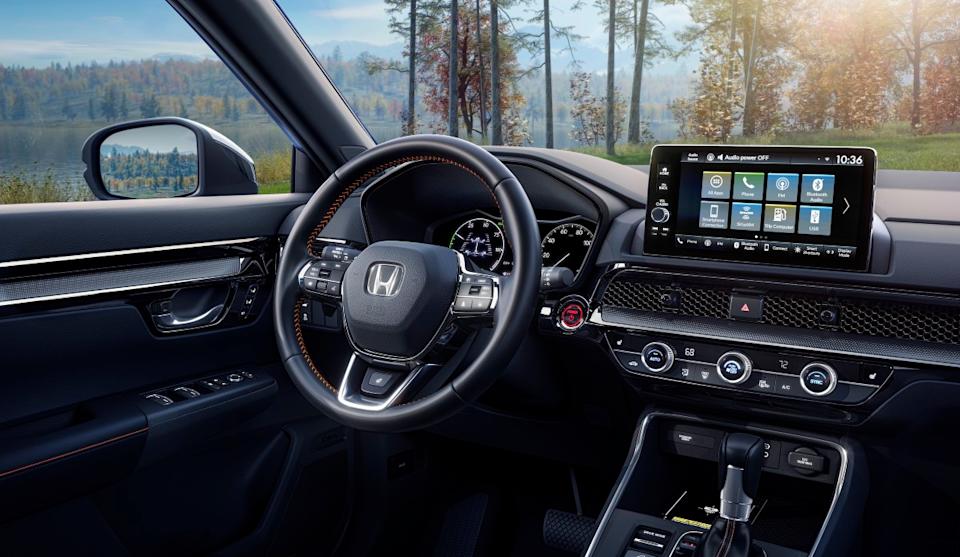
2025 Toyota RAV4 vs. Honda CR‑V: 5 Major Differences originally appeared on Autoblog.
Standout options in a busy market
The Toyota RAV4 and Honda CR‑V have been locked in a battle for compact SUV dominance for years, and for good reason. They’re two of the best-selling vehicles in America, consistently topping the charts thanks to their mix of practicality, fuel efficiency, and everyday usability. Whether you’re a growing family, a first-time buyer, or just someone who needs a solid all-rounder, chances are both of these crossovers are on your shortlist.
For 2025, Toyota and Honda are staying the course. Neither SUV gets a full redesign, but that’s because both were recently overhauled. The RAV4 got a major tech update in 2024, while the CR‑V entered a new generation for 2023. Instead of splashy changes, each brand is refining what works: more hybrid options, better infotainment, and a continued focus on value.
But even with similar goals, the two SUVs go about things differently. The RAV4 is a little bolder and more rugged, while the CR‑V feels more mature and family-focused. So which one is right for you? Here are five key differences between the 2025 Toyota RAV4 and the 2025 Honda CR‑V.
1. Engine and performance: Naturally aspirated vs turbo and hybrid powertrains
The 2025 RAV4 comes with a 2.5‑liter naturally aspirated four‑cylinder paired to an eight‑speed automatic, delivering around 203 horsepower and 184 lb-ft of torque. Hybrid versions remain available, combining the same engine with electric motors for added efficiency.
 2025 Toyota RAV4Toyota
2025 Toyota RAV4ToyotaThe 2025 CR‑V offers a standard 1.5‑liter turbocharged engine producing about 190 hp and 179 lb-ft, mated to a CVT. Honda’s hybrid is also available, a two‑motor setup providing around 204 hp and substantially smoother delivery.
 2025 Honda CR-VHonda
2025 Honda CR-VHondaIn real-world driving, many note that the CR‑V’s turbo or hybrid drivetrain feels more refined and quieter than the RAV4’s engine setup. Car and Driver rated the CR‑V Sport Touring Hybrid highly for its ride quality and praised its refinement compared to mainstream competitors like the RAV4.
2. Fuel economy: Highway edge vs city advantage
Both models are neck-and-neck in combined EPA fuel economy, with about 30 mpg for their base gasoline variants. The RAV4 slightly edges out on highway driving (35 mpg vs. CR‑V’s 34 mpg), while the CR‑V gets a marginally better city rating (28 vs. 27 mpg).
 2025 Toyota RAV4 Toyota
2025 Toyota RAV4 ToyotaHybrids shift the balance further. Honda’s CR‑V Sport Touring Hybrid delivers an EPA-estimated 40 mpg in the city and 34 mpg on the highway. That’s impressive, but Toyota’s RAV4 Hybrid edges it out slightly, with up to 41 mpg city and 38 mpg highway. Both are strong choices for fuel-conscious drivers, but the RAV4 holds a small advantage in overall efficiency.
3. Interior space and cargo capacity
The CR‑V offers more interior room and cargo volume than the RAV4. With rear seats up, the CR‑V cabin volume is around 98.9 cu ft, with up to 76.5 cu ft with rear seats folded. The RAV4 provides about 69.8 cu ft with the seats down, which is still spacious but not quite as generous.

2025 Honda CR-V
HondaView the 2 images of this gallery on the original article
Legroom favors the CR‑V too—with about 41.3 inches of front legroom and 41.0 inches in the rear, compared to the RAV4’s 41.0 up front and 37.8 in the back. In practice, many users and reviewers describe the CR‑V’s cabin as noticeably roomier and more comfortable for passengers, especially adults in the second row.
4. Pricing and value: Base vs top‑spec comparison
Starting MSRPs are comparable, with the 2025 RAV4 from around $29,550 and the CR‑V starting just above that—about $30,100. Base trims offer plenty of passenger-friendly touches and standard safety tech, including lane-keeping assist and adaptive cruise control.
 2025 Honda CR-VHonda
2025 Honda CR-VHondaAt the top end, RAV4 hybrid trims can be pricey—especially models with AWD and Adventure or Limited grade options. The CR‑V’s Sport Touring Hybrid flagship starts around $41,100 and includes luxury touches such as a Bose audio system, power tailgate, heated steering wheel, and wireless Apple CarPlay and Android Auto. While the RAV4 Limited Hybrid is slightly more affordable, some of these features are optional rather than standard.
5. Tech and safety features: Infotainment and driver assistance
Both SUVs come with mobile integration, featuring Apple CarPlay and Android Auto as standard across the board. RAV4 includes wireless smartphone mirroring and Alexa voice control as standard on many trims, while Honda’s CR‑V includes the full Honda Sensing suite on all models—featuring adaptive cruise, forward collision warning, lane keeping, and more.
 2025 Honda CR-VHonda
2025 Honda CR-VHondaToyota’s infotainment system tends to offer larger screens, with up to a 12.3‑inch display available on higher trims, while Honda’s system maxes out at nine inches. That said, the CR‑V benefits from a simpler, more intuitive interface and retains physical controls for volume and climate—something many drivers still appreciate. Blind-spot monitoring and rear cross‑traffic alert are standard on both vehicles, but Toyota sometimes reserves surround-view cameras and parking sensors for upper trims.
Final thoughts
The 2025 Toyota RAV4 and 2025 Honda CR‑V each bring a strong set of features and capabilities to the compact SUV segment. The RAV4 has more powertrain variety, including a plug-in hybrid option and rugged trims like the Woodland Edition, which make it more appealing to those with an outdoorsy lifestyle. It also slightly edges out the CR‑V in highway fuel economy and infotainment screen size.

2025 Honda CR-V
HondaView the 2 images of this gallery on the original article
However, the CR‑V holds the advantage in overall refinement, especially with its smooth and quiet hybrid system. It also offers more usable interior and cargo space, a more comfortable ride, and a better-packaged top-spec trim. If passenger comfort and upscale driving dynamics are your priority, the Honda may be the better fit. On the other hand, if you want more drivetrain options and a slightly more tech-forward cabin, the Toyota makes a compelling case. Either way, you’re getting a smart, efficient, and reliable crossover—one that’s built to handle just about anything daily life throws your way.
2025 Toyota RAV4 vs. Honda CR‑V: 5 Major Differences first appeared on Autoblog on Jul 29, 2025
This story was originally reported by Autoblog on Jul 29, 2025, where it first appeared.










![Structural Adhesives Market [2028] Exploring Potential, Growth, Future & Trends](http://www.paseban.com/zb_users/upload/2025/08/20250831123209175661472915180.jpg)


